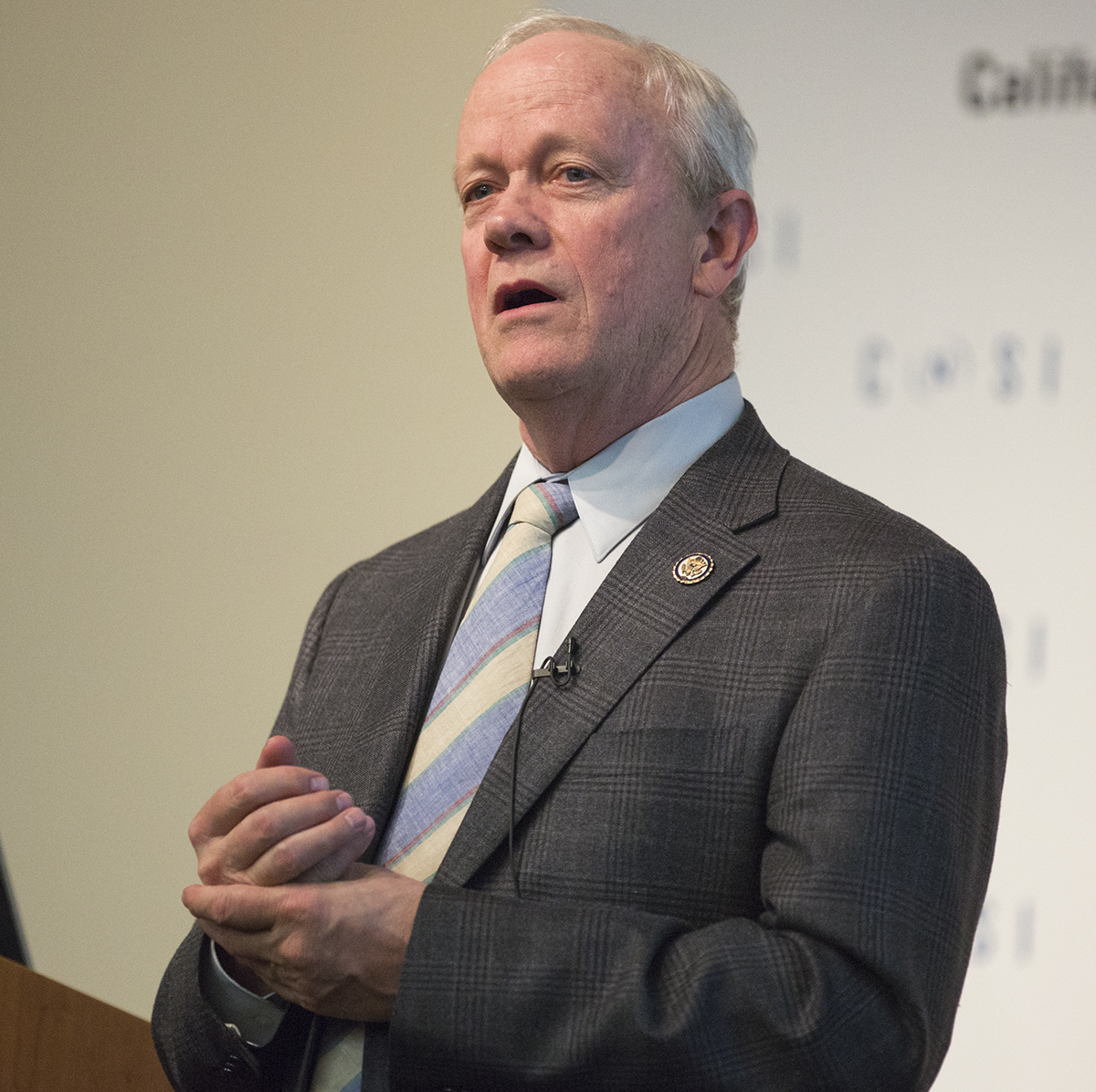Mathematics of Politics talks data analysis, campaigns

Congressmen Jerry McNerney (D-Stockton) gave a lecture on election campaigning Tuesday, where he discussed the role of math and data in informing campaign decisions.
(Austin Yu/Daily Bruin)
By Alex Torpey
April 23, 2014 12:50 a.m.
During the height of the Enlightenment, French mathematician and philosopher Marquis de Condorcet first brought together the diverse disciplines of mathematics and politics in his renowned study of voting methods.
Hundreds of years later, the paths of math and politics continue to cross. This week, Mathematics of Politics, a new workshop at UCLA, hopes to bring the conversation one step further.
“The goal is to bring people from different disciplines together to talk about common problems that can be solved from math, forming research communities to encourage cross disciplinary collaborations,” said Stacey Beggs, assistant director of the Institute for Pure and Applied Mathematics, which organized the event.
The era of computing has brought new ideas and possibilities to the realm of data analysis and politics, said Mark Green, co-founder and former director of the institute and professor emeritus of mathematics at UCLA.
“Math is changing the way politicians campaign,” Beggs said.
The workshop is being held at the Institute of Pure and Applied Mathematics on Tuesday and Wednesday.
Campaign mythbusting
Lynn Vavreck, a professor of political science at UCLA, spoke at a workshop Tuesday morning about how statistical analysis can be used to disprove popular misconceptions about elections.
In a presentation titled, “Mythbusters: Game Changers and Big Data in Presidential Campaigns,” Vavreck showcased findings of the Cooperative Campaign Analysis Project, which she co-founded.
In partnership with Yougov.com, a polling website, the project conducted 135,000 interviews with 45,000 people over the course of the 2012 presidential campaign season. They also analyzed over a million ads and 11,000 news outlets to get data on what kinds of ads and stories people saw during the campaign.
“These data give us tremendous power to illustrate precisely how and why voters’ opinions were changed by the campaigns and whether the election outcome shifted in response,” Vavreck said at the workshop.
She said the story told by these analyses conflicts with the way the news media and pundits portray the election cycle. From July 1 until election day, there were 19,600 stories about “game changers,” or single, highly publicized moments that sway voters, Vavreck said.
Among “game changing” moments were a range of subjects, from the first presidential debate to Lindsay Lohan’s endorsement of Mitt Romney.
But Vavreck said highly publicized moments have much less impact on voters than traditional polls and news media suggest. Election races are actually tug-of-wars that require constant campaigning by the candidates, not boxing matches with game-changing knockouts, Vavreck said.
She said partisan voters are relatively stable in the beginning of an election year, flirt with changing their choice in the midst of election seasons, but ultimately return to their party’s candidate in time for the vote.
Independents, however, were more likely to be undecided closer to election day, Vavreck said.
Another election myth Vavreck debunked is that “big data” helped President Barack Obama win his election by identifying certain swing groups he could target with ads. The consumer data that the Obama campaign used to predict who he could target for a vote is at least a thousand times less data than what Google processed in a single day in 2007, she said.
With bigger data like that used in the study, journalists could better analyze and describe swings in the election cycle, Vavreck said.
Role of math and politics
In his public lecture on election campaigning, Congressmen Jerry McNerney (D-Stockton) discussed the importance of mathematics and data in informing campaign decisions.
The central question, McNerney said, is to understand which dollars spent are most effective in returning votes.
In every step of the process, from initial polling to budgeting, from media outreach to door knocking, the aim is to direct the campaign budget to achieve the greatest impact, measured in terms of “yes” votes, McNerney said in his talk.
“If you knew, you would have an incredibly powerful campaign, and that’s a question for mathematicians,” McNerney said.
McNerney said the risks and boundaries of evolving data usage, however, are yet to be clearly defined. Concerns of privacy and security are questions that should be addressed soon, he added.
The potential for mathematics in politics is vast and growing, especially in building understanding of effective campaigning.
“It’s not a science yet. It’s an art,” McNerney said. “If we can inject some quantitative rigor to (campaigning) it would be a benefit to the system.”


